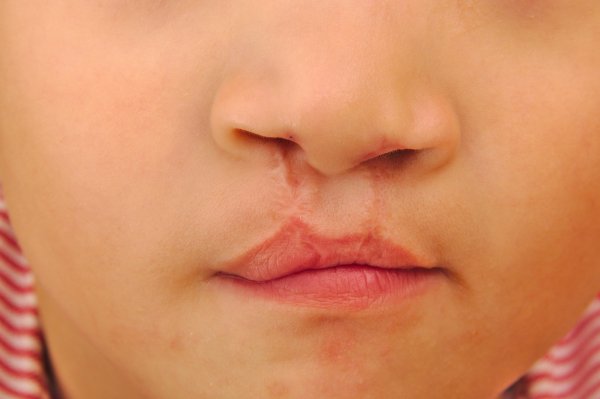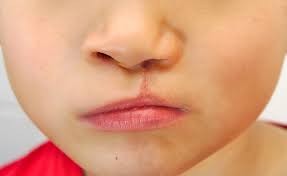Palate repair surgery, often referred to as cleft palate repair surgery, is a crucial procedure aimed at correcting congenital defects in the palate, which is the roof of the mouth. This condition can significantly impact speech, feeding, and overall quality of life. If you or a loved one are considering this surgery, understanding the procedure, preparation, and recovery is essential for ensuring a successful outcome. Here’s a comprehensive guide on what you need to know about Palate Repair Surgery in Dubai.
1. Understanding Palate Repair Surgery
What It Is
Palate repair surgery is designed to correct a cleft palate—a congenital defect where the roof of the mouth has an opening that can extend from the soft palate to the hard palate. This condition can lead to difficulties with feeding, speech, and ear infections. The surgery aims to close this gap and restore normal function and appearance.
Purpose and Goals
The primary goals of palate repair surgery are to:
- Close the cleft or gap in the palate.
- Improve the ability to speak clearly.
- Facilitate proper feeding and swallowing.
- Reduce the risk of ear infections and other complications.

2. Assessing Suitability
Candidates for Surgery
Palate repair surgery is typically performed on infants and young children, often around 6 to 18 months of age, but it can also be performed on older children and adults. The timing of the surgery is crucial for optimal results and is based on the child’s overall health, growth, and specific needs.
Medical Evaluation
Before the surgery, a thorough medical evaluation is required to ensure the patient is in good health. This evaluation may include physical examinations, blood tests, and imaging studies. The surgical team will assess the extent of the cleft and develop a personalized treatment plan.
3. Choosing a Qualified Surgeon
Experience and Credentials
Selecting a qualified and experienced surgeon is essential for a successful outcome. Look for a board-certified plastic surgeon or oral and maxillofacial surgeon specializing in cleft palate repair. Review their credentials, experience, and patient reviews.
Consultation
During the initial consultation, the surgeon will explain the procedure, discuss the expected outcomes, and address any concerns. This is also an opportunity to ask about the surgeon’s experience, the surgical approach, and the potential risks and benefits.
4. Preparing for the Surgery
Pre-Operative Instructions
Follow all pre-operative instructions provided by the surgical team. This may include dietary restrictions, fasting before the surgery, and any medications that need to be taken or avoided. Proper preparation is crucial for minimizing risks and ensuring a smooth procedure.
Arrangements and Support
Arrange for transportation to and from the surgical facility, and consider having a support person available to help with care and logistics. Ensure you have all necessary supplies and information for post-operative care.
5. The Surgical Procedure
Anesthesia
Palate repair surgery is typically performed under general anesthesia, meaning the patient will be asleep and pain-free during the procedure. The anesthesiologist will monitor the patient’s vital signs throughout the surgery to ensure safety.
Surgical Approach
The surgeon will make an incision in the palate to access the cleft. The tissue is then repositioned and sutured to close the gap. The specific techniques used may vary based on the severity of the cleft and the patient’s individual anatomy.
6. Post-Surgery Care
Immediate Recovery
Following the surgery, the patient will be monitored in a recovery area until the effects of anesthesia wear off. Pain management and monitoring for any immediate complications will be provided.
Wound Care
Care for the surgical site involves keeping the area clean and dry. Follow the surgeon’s instructions for wound care and use any prescribed medications or ointments as directed. Avoid any activities that may put strain on the surgical site.
7. Managing Pain and Discomfort
Pain Relief
Pain and discomfort are common after palate repair surgery. The surgical team will provide pain relief options, including medications and recommendations for managing discomfort. Follow these instructions carefully to ensure effective pain control.
Swelling and Bruising
Swelling and bruising around the surgical area are common and should subside within a few weeks. Applying cold compresses as directed can help reduce swelling and promote healing.
8. Diet and Feeding
Feeding Guidelines
Post-surgery, the patient may need to follow specific feeding guidelines to avoid putting pressure on the surgical site. Soft or liquid diets are often recommended, and feeding techniques may need to be adjusted based on the patient’s age and specific needs.
Hydration and Nutrition
Maintain proper hydration and nutrition to support healing. Follow any dietary restrictions or recommendations provided by the surgical team, and gradually reintroduce solid foods as advised.
9. Follow-Up Care
Scheduled Appointments
Regular follow-up appointments with the surgeon are essential for monitoring recovery and ensuring the surgical site is healing properly. During these visits, the surgeon will assess progress and make any necessary adjustments to the treatment plan.
Speech and Language Therapy
In some cases, speech and language therapy may be recommended to address any speech issues resulting from the cleft palate. This therapy helps improve articulation and communication skills.
10. Potential Risks and Complications
Common Risks
As with any surgery, palate repair surgery carries some risks, including infection, bleeding, and adverse reactions to anesthesia. The surgical team will take precautions to minimize these risks and manage any complications that may arise.
Specific Complications
Potential complications specific to palate repair surgery include issues with wound healing, fistula formation (an abnormal connection between tissues), and changes in speech or swallowing. Discuss these potential complications with your surgeon and understand the signs to watch for.
11. Long-Term Care and Maintenance
Monitoring Progress
Ongoing monitoring is important to ensure the success of the surgery and address any long-term concerns. Regular check-ups will help assess the results and determine if any additional treatments or interventions are needed.
Lifestyle Adjustments
Making necessary lifestyle adjustments, such as maintaining a healthy diet and avoiding activities that could impact the surgical site, is important for long-term success. Follow any lifestyle recommendations provided by the surgical team.
Conclusion
Palate repair surgery is a significant procedure that can greatly improve quality of life for individuals with cleft palate. By understanding the procedure, preparing adequately, and following post-surgery care instructions, you can contribute to a successful recovery and optimal outcomes. If you have any questions or concerns, consult with your surgical team to ensure you are fully informed and prepared for the journey ahead.





Comments